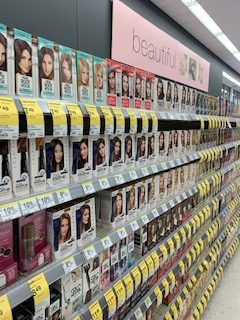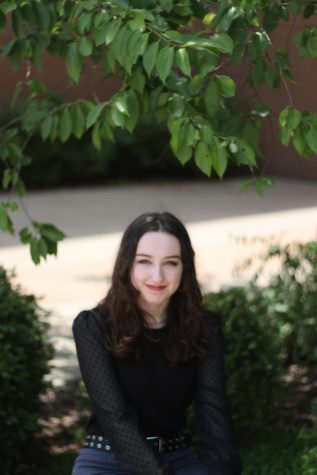The Suppression of Creative Expression
Should WCA allow students to dye their hair unnatural colors?

Unnatural hair colors at Westminster may encourage more creativity and individuality.
At Westminster Christian Academy, hair colors that aren’t naturally occuring are banned. This means no bubblegum pink hair, no bright teal hair, and no emerald green hair — if your hair is dyed any color of the rainbow, you will be issued a detention. Not even dip-dyed hair is allowed at WCA. Here is my worry: this rule may be suppressing creative expression.
According to Deana Vandegriff, director of academic operations, one of the reasons no unnatural hair colors are allowed is to “help unify us.” She also offered another explanation: “Teams all wear the same uniform for a reason. It identifies them as being connected.” This is true: teams all have the same uniform and it helps identify them as a body. However, if you look at professional teams —take baseball, for example — they all take creative liberty, some wearing stripes while others don’t, expressing individuality in their cleats, etc. While community is extremely important, celebrating individuality within that community is equally important, and students need more opportunities for said individualism. In fact, the Bible speaks in Romans 12:4-5 about maintaining individuality within the body of Christ: “For as in one body we have many members, and the members do not all have the same function, so we, though many, are one body in Christ, and individually members one of another.”
We should be able to look different and still feel close, and God wants things to be this way. However, what with already having uniforms, everyone seems to blend into each other, and while this might connect us, it also creates a mildly mundane atmosphere: nothing and no one stands out. We are lost in a sea of beige and blue. Students are not called to be creative and innovative in a community that produces rules restricting individualism, and individuality is therefore lost, along with a desire to express ourselves creatively. That said, WCA does do a good job of promoting individuality in other outlets; we have a wonderful arts program (including both the visual arts and the fine arts) to back this up, and one of our core beliefs is being able to express creativity. But at the moment, this conflicts with the no unnatural hair color rule. Allowing colors to seep into the student body could really help counter this lack of individuality. I’m not arguing that we should scrap uniforms altogether, but relaxing the hair color rule could really benefit the life in the community and help students express themselves.
Everyday, we are surrounded in the same shade of beige, and this can feel tedious and defeating to us as students — it amplifies the frustration of school, seemingly lengthening the school day. Of course, I’m thankful for this wonderful school I go to and all the incredible teachers, but school feels long to most students, and the dreary color palette only amplifies this. This raises an important question: how much physical similarity is too much? I believe Westminster currently crosses the line between unity and individuality, and because of this, vivosity and liveliness of the student body is dulled from the amazingly active community WCA actually has. The occasional colored head would be a nice break to this redundancy, possibly bringing some life back into students.
And here we reach the overused argument that hair color will be a distraction. However, when I searched for surveys and scientific research backing this up, I found nothing, meaning there is absolutely no proof that this is the case. On the lists of the greatest distractions, there were things such as texting, eating in class, socializing, and social media, but never hair color. The argument is invalid in every way, for we have no reason at all to believe unnatural hair color will distract students — we have just been using deductive reasoning that might be majorly flawed. In fact, the chance that students will be affected in a learning environment seems very slim in modern day context because unnatural hair color is so common nowadays that it doesn’t stand out as it once did; people are used to it. Even if hair being a distraction was a valid argument at some point, it just doesn’t apply anymore.
Susie Brown, director of student life, has an additional concern about the possible distractions dyed hair might cause: “If people have a crazy hair color, others might focus on hair instead of what is most important — character,” she said. I agree that distraction from character would be an awful thing and truly do not want this to happen. In fact, I admire Mrs. Brown for seeking this. However, I just cannot see any situation where hair color would distract us from our morals and integrity. I can’t find the correlation between the two, and I think that, if it somehow did, the effect would wear off after a couple of hours. I think the reality is that people are not going to forget about having integrity because the person sitting next to them has blue hair.
I don’t believe having unnatural hair will make the community feel separated or distract people from either class or their moral obligations. In fact, hair color has the potential to enhance our community, rekindling life into us and giving people the opportunity for individualism. This is a legitimate form of creative expression and an even more perfect one for introverts who need ways to express themselves other than talking. I will say this: if differentiating hair color is able to weaken our community, Westminster may have some deeper issues to address.




